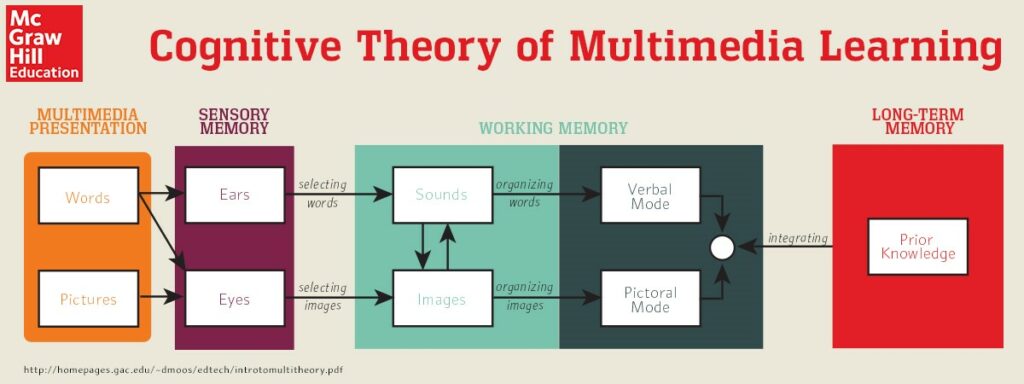- AR application to multi-media teaching
Augmented Reality (AR) is a technology that uses a technological device to convert imaginations into virtual images. In multimedia teaching, augmented reality converts digital content into the physical world to make teachers and learners visualize them in their space (DeBell, 2019). AR brings new ways to use digital devices to bring different phenomena into the physical space in the same way as they experience the world. For example, teachers can use AR to teach students how the human brain works. In this way, the students get to visualize how different parts of the mind react to thought processes, thereby improving the understanding of content.
- Theories that can be utilized by using well-built infographics
The cognitive theory (Mayer, 2002, p.47) can be used when using a well-built infographic. It states that people learn better when words and visuals are used together, rather than words alone. However, using words and pictures alone does not necessarily improve learning. AR brings light to how the mind works. Figure 1 shows the visual presentation of the cognitive theory for multimedia learning. When using infographics, the limited capacity assumption must be considered. Because of the limited capacity of the human mind, there are finite memory processors, so we must carefully choose the content we want to keep in our memory. With AR, teachers can avoid overwhelming learners with information. One way to effectively do this is to limit the amount of text and pictures to include in an infographic.

Source: https://www.mheducation.ca/blog/richard-mayers-cognitive-theory-of-multimedia-learning
AR in the future classrooms?
I see AR as a key tool in future classrooms. New forms of educating students are coming up as technology continues to advance. Many schools will be specializing in AR to accommodate increased social interactions, fatigue, and complexity of learning. With the emergence of 5G, more opportunities to use AR to study nature, human anatomy, materials, and other forms of the ecosystem will come up. According to EON Reality (2019), more prominent figures such as TV show directors and Nobel Prize winners will be more accessible in the augmented spaces (par. 9). Since repetition improves knowledge retention, AR will be used to improve the quality of education as the future will be characterized by a wide range of learning content than the past.
References
DeBell, A. (2019, December 11). How to Use Mayer’s 12 Principles of Multimedia Learning. Water Bear Learning. http://waterbearlearning.com/mayers-principles-multimedia-learning/
EON Reality. (2019, May). WHAT WILL THE CLASSROOM OF 2030 LOOK LIKE FOR THE STUDENT OF THE FUTURE? https://www.youtube.com/watch?v=F_-GCrw24ic
Mayer, R. E. (2002). Multimedia learning. Psychology of Learning and Motivation, 41, 85-139.
Leave a Reply